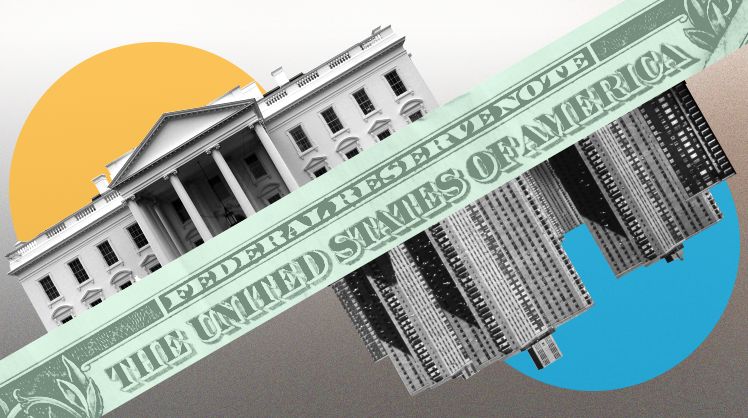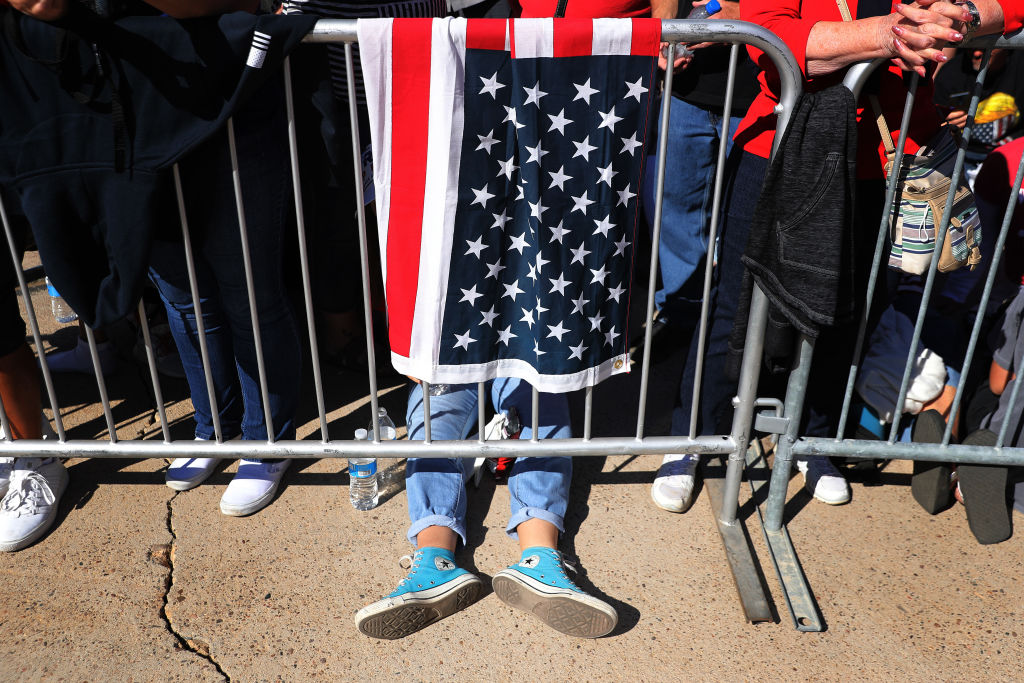Co-published by Fast Company
Post-World War II America experienced both the continuing benefits of the New Deal and the consolidation of the American labor movement. During this period the wages of the lowest- and highest-paid workers rose together, while the share of the top 10%’s income decreased–validating a growing popular belief that, in John F. Kennedy’s words, “a rising tide lifts all boats.”
The New Deal, from which this relative golden age sprang, hadn’t begun as a visionary social blueprint so much as a series of laws, passed during the emergency of the Great Depression, that aimed to restore America’s battered prosperity by increasing employment opportunities, providing assistance to the elderly and dependent children, and establishing the rights of workers. In his first term, President Franklin Roosevelt strengthened banking regulation with the Glass-Steagall Act, provided jobs through the Works Progress Administration, and brought electricity (and economic development) to the rural South through the Tennessee Valley Authority.
But by the early 1970s, beginning with a pivotal pro-business essay written by a Virginia corporate lawyer—and future Supreme Court justice—named Lewis Powell, things began to move in the other direction, inexorably so. Nearly 50 years later, the gap between the rich and the poor has grown. The wealthiest 1% are capturing an increasing share of the national income. The fortunes of the rich and the poor have diverged to the point that, in some places in the United States, there are levels of inequality reminiscent of the Gilded Age. How did this happen?
Many scholars blame trade globalization, foreign competition, or labor-reducing technology. But others point to people in power making conscious decisions. “Increasing inequality is a matter of choice: a consequence of our policies, laws and regulations,” wrote the economist and Nobel laureate Joseph Stiglitz in 2018.
Presidents, business executives, Supreme Court justices, and members of Congress made decisions to erode workers’ power, confer benefits upon the wealthy, and slash the social safety net. These choices happened together and within a system to disadvantage the poor and working and to reward the wealthy.
Economic inequality–especially the tearing of the social safety net woven by the New Deal—did not happen by accident. Nor did it all happen with the end of President Lyndon Johnson’s Great Society programs. Somewhere between the passage of the Social Security Act and the Powell Memorandum, a slow counterattack against the New Deal had begun to find its voice and its weapons; some of the seeds of the New Deal’s dismantling were sown during FDR’s four terms and, sometimes, by his own administration. New Deal benefits excluded vast majorities of black workers and women. The Social Security and Wagner acts (the latter of which established labor rights) consciously excluded agricultural and domestic workers, categories which represented two-thirds of black workers.
These exclusions created “a population that did low-wage work and was not protected by our labor laws,” says Kate Bronfenbrenner, director of Labor Education Research at Cornell University’s School of Industrial and Labor Relations.
Outside forces were also at work undermining the New Deal. In 1943, Florida passed the first “right to work” law that stifled the labor movement and created a template for other states to attack and weaken unions. In 1944’s NLRB v. Hearst Publications, Inc., the Supreme Court created a legal basis for contract work that opened the door to the temporary work economy that emerged over two decades later. Perhaps the most destructive of these early attacks on unions came in 1947 with passage of the Taft-Hartley Act, which limited labor’s ability to organize strikes and engage in political activity. The bipartisan law, which passed over President Harry Truman’s veto, was the start of the modern anti-labor movement in America.
Introduction & 1940s: John Schmidtt, Colin Gordon, Estelle Sommollier and Mark Price, Joseph Stiglitz, Brad Plumer, Kate Bronfenbrenner, National Right to Work Foundation, Nelson Lichtenstein, National Labor Relations Board, Helen Dewar and Edward Walsh, Todd Tucker.
1960s: Colin Gordon, Matthew Michaels, Kimberly Amadeo.
1970s: Reclaim Democracy, Colin Gordon.
1980s: Brian Craig, Yes! magazine, Todd Tucker, Brookings Institute, Colin Gordon, Kimberly Amadeo, Katy Milani and Irene Tung, Adam Barone, William Greider/The Atlantic, Nelson Lichtenstein.
1990s: I.M. Dessler, Colin Gordon, Gary Stern and Ron Feldman, Kimberly Amadeo.
2000s: Emily Horton, Zachary Goldfarb, Kimberly Amadeo, Matt O’Brien, Todd Tucker, National Right to Work Foundation.
Illustration by: Fast Company
Copyright Capital & Main





